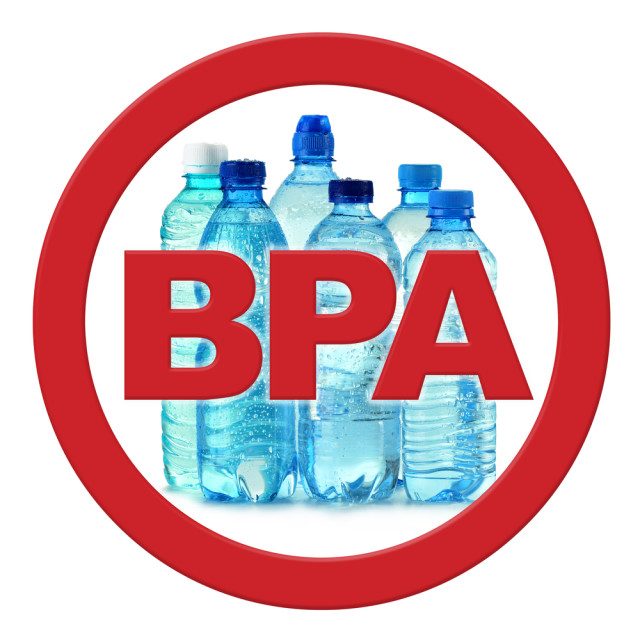
Written by Michael Green | Center for Environmental Health
Back in the news: The toxic plastics chemical Bisphenol A (BPA)
I talked to Green Divas Meg and Lynn about BPA’s history, science and policy, and how to avoid this toxic chemical. Hope you’ll listen then read on for more details…
For Center for Environmental Health (CEH), BPA exemplifies many of the more problematic aspects of our country’s approach to harmful chemicals in everyday products.
A look at the history and science around BPA is instructive for all who are working to end toxic health threats to our children and families.
BPA and chemical policy history
BPA was first created in the late 1800s, and in the 1930s it was rediscovered by scientists who were looking for a drug that would prevent miscarriages and be used to treat women who suffered from menstrual problems. In their tinkering, they found BPA would work because it can mimic the female hormone estrogen. BPA was abandoned as a drug when the more potent (and now notorious) hormone replacement drug diethylstilbestrol (DES) was discovered, but BPA soon became widely used in other ways: in plastics, in the lining of canned foods, and in other everyday products.
Apparently no one thought that it might be a bad idea to expose people to a chemical that was known to alter the bodies’ natural hormones and potentially cause serious reproductive health problems. And no government rules required companies to demonstrate that BPA would be safe in their products before the products were sold to millions of Americans.
But that was the Depression-era 1930’s – surely things are better today, right?
Sadly, the situation today is worse. Companies can continue to use BPA and any number of the more than 80,000 chemicals that are on the market, without demonstrating first that they are safe for our children and families. Our country’s chemical safety rules were inadequate when they were developed in the 1970’s, and today the law still allows companies to sell risky, untested chemicals. Even worse, the latest Congressional proposals to revise these policies would leave most of the worst provisions in place.
BPA Today: Science and Policy at Odds
Recently the FDA acknowledged that BPA can leach into food from packaging, while reiterating its position that the BPA levels in our food are safe. That sounds like good news, until you look at the science. When it comes to chemicals like BPA that can disrupt our natural hormones, many scientists say that low-doses may be even more harmful than higher doses. That’s because large doses of these chemicals can overwhelm the receptors in our bodies where hormones do their work. Smaller doses can “fit” into these receptors and damage our health, with studies linking BPA to cancer, developmental and reproductive health problems, heart disease, obesity and other serious concerns. One recent study even linked BPA to quick spikes in blood pressure.
While FDA maintains its anti-science policy, others are taking a more proactive stance. Several states have banned or restricted uses of BPA, especially in products for young children. And while the FDA was declaring BPA safe, in December a California court ruled that state scientists were correct when they found that BPA is a chemical known to cause serious reproductive health problems.
How to Avoid BPA and Understand “BPA-Free”
If you shop for safer plastics, especially kids’ products, you likely have seen labels that say products are “BPA-Free.” In some cases, these products may be safer – but without regulations that require safety testing and labeling, we can’t know what new, potentially harmful chemicals might be used in place of BPA (one BPA replacement is already suspected of disrupting normal brain development). Without such rules, companies play a toxic shell game: they use risky, untested chemicals until overwhelming evidence of health problems forces regulators to ban the chemical — and then they switch to newer, equally risky untested chemicals.
CEH is pushing Congress to adopt real chemical safety rules that put our children’s and families’ health first. In the meantime, look for products like canned foods from companies that say they don’t use BPA, use glass or stainless steel food containers in place of plastics, and avoid paper receipts (which can be made with BPA) and other hidden BPA hazards.
 Michael Green promotes the Center for Environmental Health (CEH) to raise public awareness of the corporate use of toxic chemicals and of the many viable, pragmatic solutions to this pervasive threat to public health. He founded CEH in 1996 and since then has helped lead national efforts to stop toxic exposures and protect public health. He has also pioneered the groundbreaking legal work that has won landmark victories to protect the public from hazardous consumer products and toxic emissions. Michael has worked in Washington D.C. for the U.S. Department of Energy’s Office of Environmental Management, and the US EPA’s Working Group on Environmental Equity. Michael designed a solid waste management plan for the Tibetan refugee community in Dharamsala, India, and cared for the sick at Mother Teresa’s mission in Calcutta, India. He was awarded the California Wellness Foundation’s annual Leadership Award, as well as the prestigious Compassion in Action Award which is presented jointly from the Dalai Lama Foundation and the Committee of 100 for Tibet each year. He has testified in front of Congress, serves on numerous boards of directors, and is frequently quoted in national and international media. Michael has an MS in Natural Resources and an MPP in Public Policy, both from the University of Michigan. Follow Michael on twitter @greenmgreen and CEH @4EnviroHealth. You can also find CEH on facebook.
Michael Green promotes the Center for Environmental Health (CEH) to raise public awareness of the corporate use of toxic chemicals and of the many viable, pragmatic solutions to this pervasive threat to public health. He founded CEH in 1996 and since then has helped lead national efforts to stop toxic exposures and protect public health. He has also pioneered the groundbreaking legal work that has won landmark victories to protect the public from hazardous consumer products and toxic emissions. Michael has worked in Washington D.C. for the U.S. Department of Energy’s Office of Environmental Management, and the US EPA’s Working Group on Environmental Equity. Michael designed a solid waste management plan for the Tibetan refugee community in Dharamsala, India, and cared for the sick at Mother Teresa’s mission in Calcutta, India. He was awarded the California Wellness Foundation’s annual Leadership Award, as well as the prestigious Compassion in Action Award which is presented jointly from the Dalai Lama Foundation and the Committee of 100 for Tibet each year. He has testified in front of Congress, serves on numerous boards of directors, and is frequently quoted in national and international media. Michael has an MS in Natural Resources and an MPP in Public Policy, both from the University of Michigan. Follow Michael on twitter @greenmgreen and CEH @4EnviroHealth. You can also find CEH on facebook.
[dynamic-sidebar id=’Custom Widget 2′]